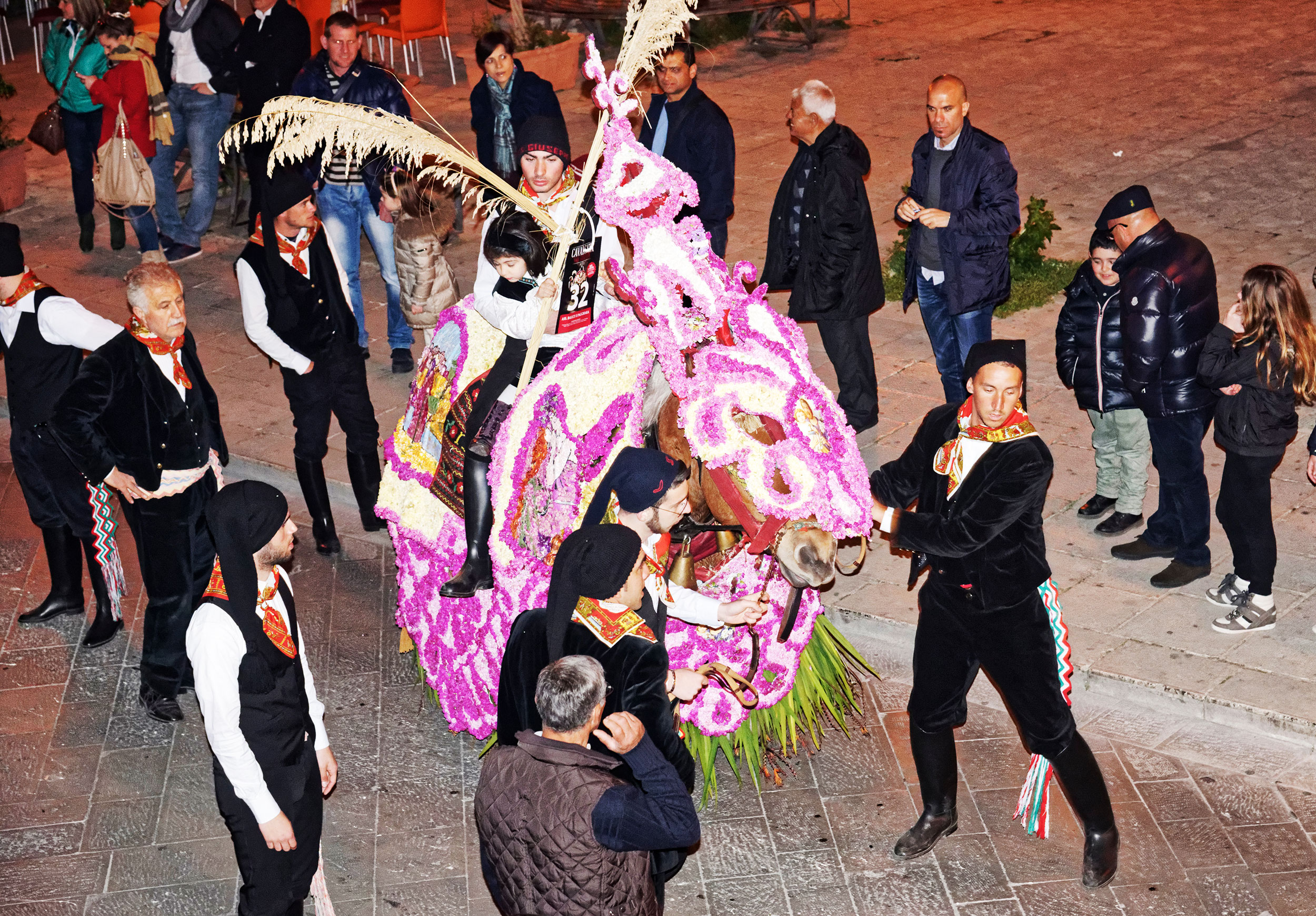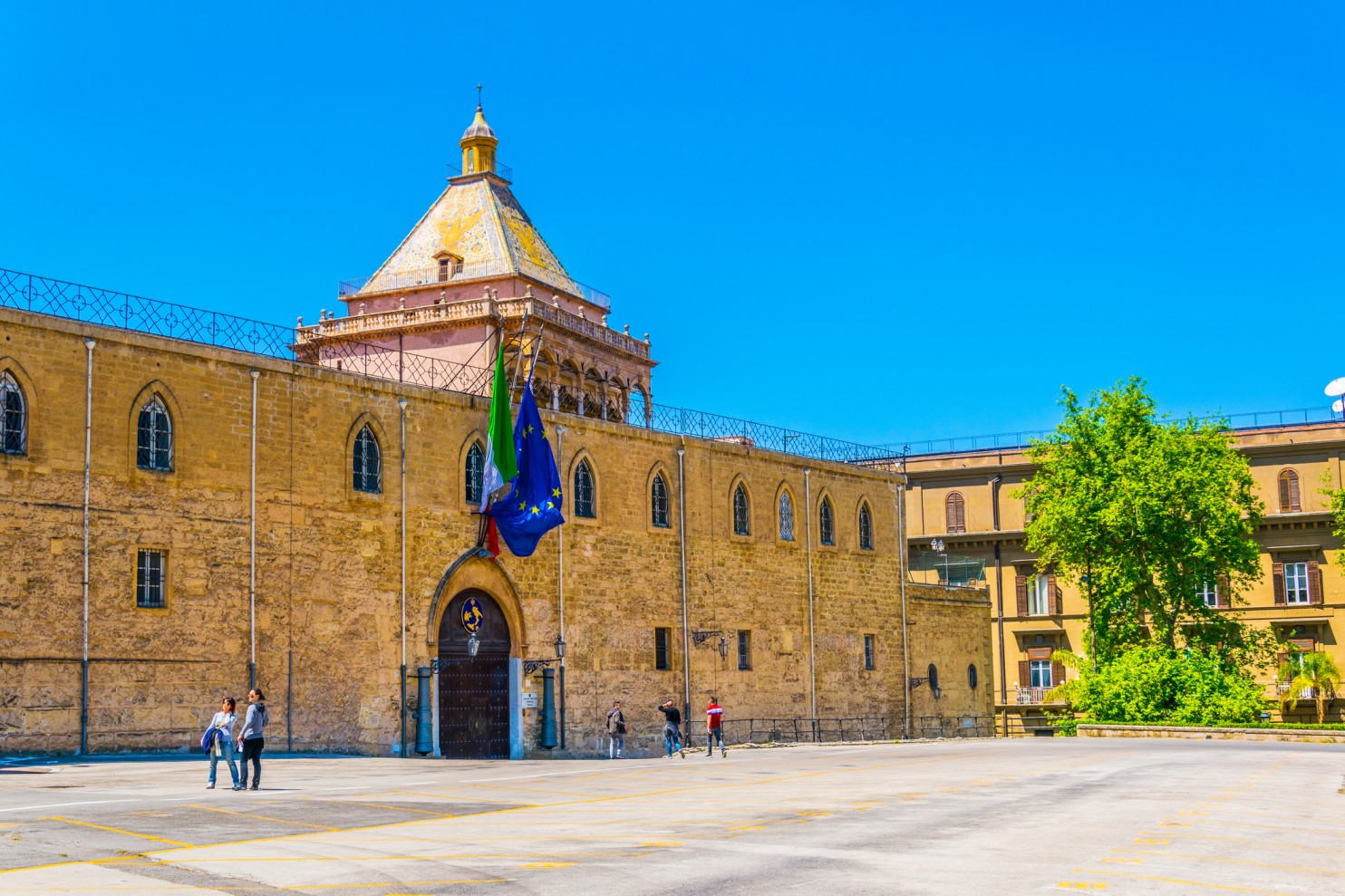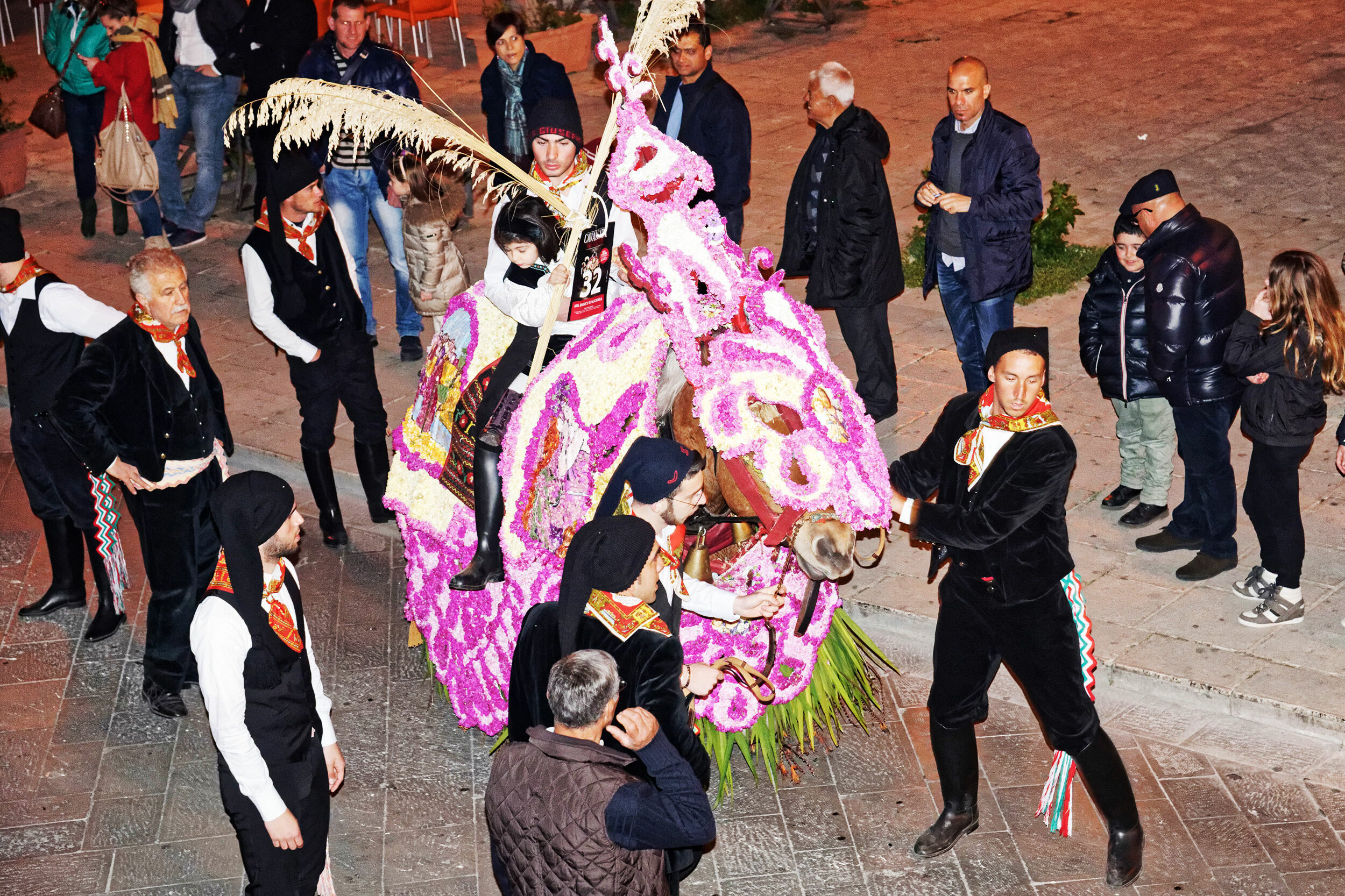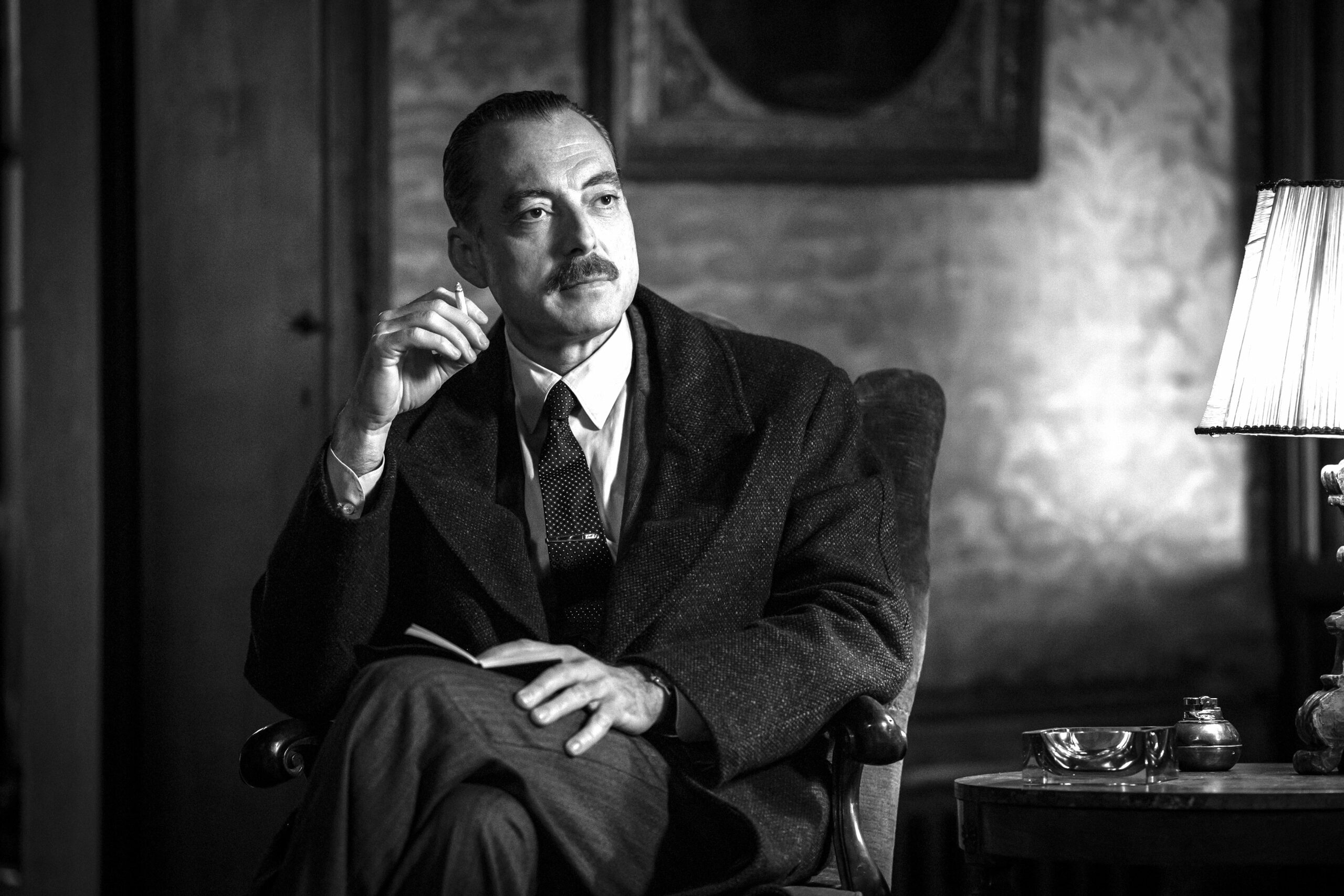Old Saint Joseph, what’s in your basket?/ Fresh grass, fresh violets/ nests, birds, and joyful sun!/ In the smallest nook/ I have a little flake of snow,/ a plate of fritters/ and so many other beautiful things!/ As spring arrives/ I sing a prayer to all/ the prayer of love/ to Jesus, our Lord. (Teresa Romei Correggi)
This poem, in a few lines, captures the most human aspect of the March 19th celebration honoring the figure of Patriarch Saint Joseph, husband of Mary and foster father of Jesus. In its own way, it narrates the unfolding of celebrations across much of Sicily, emphasizing in simple words that it’s a festival of the people — let’s not forget Joseph was a craftsman — where local delicacies are savored and when, perhaps, the last snow of spring has fallen. A festival where flowers play a leading role, prayers are offered, and where thanks are given to the saint for received graces. And the ethnologist from Palermo, Giuseppe Pitrè, in his Sicilian Folk Songs (vol.II), includes a Prayer to Saint Joseph that goes: “San Giusippuzzu di Muntulieddu/ N testa purtati lu santu cappeddu/Ed a li manu lu santu vastuni/San Giusippuzzu di Muntuliuni”(Saint Giuseppino of Monteleone/ On your head you carry the holy hat, / And in your hand the holy staff, / Saint Giuseppino of Monteleone.”
In the Catholic calendar, March 19th is dedicated to celebrating Saint Joseph, and it’s a day marked by joyous festivities across many Sicilian towns. In some places, the devotion is particularly intense, with events leading up to and on the day itself drawing large numbers of the faithful. One such tradition, boasting four centuries of history, is observed in Leonforte, in the province of Enna. Here, the custom of the Artara (altar) of Saint Joseph involves setting up “altars” throughout the community. These are essentially tables laden with food, drawing visitors from across the province and beyond to partake in one of the region’s most heartfelt celebrations. Starting in the afternoon of March 18th, a variety of local delicacies prepared in honor of the saint can be enjoyed. These include cardoons, sfingi (sweet fritters), fennel, wines, broad beans, chickpeas, pupidduzzi (specially shaped blessed bread), and many other local products, all offered for free by the organizers. The quest to find these Artara altars takes revelers through the streets of Leonforte, an adventure that lasts all night. Once marked by shoeboxes wrapped and lit with the inscription W S.G. (Long live Saint Joseph), today’s guides are shining stars illuminated by small lights. The festivities also include the recitation of raziuneddi (dialectical prayers recounting the life of Jesus), performed by youngsters. These children then receive pupiddi, which they wear around their necks as necklaces and trophies, almost as if they were generals returning from battle.
The tables are laid by those who have asked for a blessing and, having received it, offer food to thank the saint, protector of the poor. Bread is undeniably the centerpiece of every table. It’s a tradition for the women of the household to prepare it, intricately shaping it into almost sculptural forms (cuddure), each with a specific meaning and intended use when offered, along with other dishes, to the “Saints.” On the Artara, one can find also omelets, fennel patties, cardoons, chickpeas, early produce, sweets, and more. A drapery of bridal veils (cielo), arranged like a canopy with an image of Saint Joseph among them, completes the altar.
Those setting the tables are individuals who have sought and received a divine grace, offering food in gratitude to the saint who watches over the poor. Bread reigns supreme on these tables, traditionally prepared by the women of the household. They craft it into almost sculptural forms known as cuddure, each with its own specific meaning and purpose when offered, alongside other dishes like omelets, fennel meatballs, cardoons, chickpeas, early produce, sweets, and more, dedicated to the “Saints.” A canopy of bridal veils, known as cielo, and an image of Saint Joseph amidst the veils, complete the altar. The following day, March 19th, marks the culmination, with the “Saints” receiving the feast laid out on the altar. Historically, the most needy were called to this role, allowing them sustenance for weeks, thus fulfilling the provider’s vow. Today, as many dishes as were offered by the host are distributed to each “saint,” not before the host performs a washing and kissing of feet, echoing the Last Supper ritual.
In Donnalucata, a hamlet of Scicli, on March 8th, 9th, and 10th, one can witness the gathering and traditional parade of the Cavalcata di San Giuseppe, this year celebrating its thirty-ninth edition. Musicians and flag-wavers from nearby Floridia also participate, with the festival announced by ringing bells and cannon shots. It continues with a parade of Sicilian carts and festively adorned horses, and a procession behind the statue of the saint, concluding the celebrations with an auction of gifts during the traditional dinner offered by the devotees to Saint Joseph.
In the Ragusan municipality of Scicli, the commemoration unfolds over the 15th, 16th, and 17th, with the Cavalcata di San Giuseppe taking place on the 16th. Originally a medieval festivity aimed at invoking rain for a subsequent bountiful harvest, it has evolved into a celebration of the Holy Patriarch. The horse trappings for the Cavalcata are prepared in the dammusi (ground floor rooms of the houses) by numerous people who, once using a framework of palm branches and now on burlap canvases, weave thousands of violets (u bàlucu), creating tapestries that depict the Holy Family and other sacred themes. Riders in traditional peasant attire, consisting of black velvet trousers and vests, embroidered white shirts, multicolored sashes woven at the hips, red neckerchiefs, soft hats (burritta), boots, and reed pipes, mount magnificent steeds. At the head of the procession, three figures representing Jesus, Joseph, and Mary lead the way. As the parade moves through the city, it passes by pagghiara (bonfires) lit by the faithful in anticipation of their passage. Along the route, riders and townspeople “light” the path for the Holy Family, holding torches made of ciaccari (Mauritian grass) aflame.

Meanwhile, on the western side of the island’s southern coast, preparations are underway for the Almond Blossom Festival, a herald of the beautiful spring season. It brings together people from foreign nations in the spirit of peace and brotherhood, showcasing their finest folk groups annually. Competing for the coveted Golden Temple award from March 9th to 17th, 2024, will be Albania, Cameroon, Colombia, Korea, Ecuador, Georgia, Japan, Greece, India, Italy, Latvia, Macedonia, Malta, Mexico, Montenegro, Poland, Romania, Russiyana (a Russian and Character Dance Company based in Milan), Serbia, Slovakia, Spain, and Ukraine. After all groups have performed, the award will be presented near the Temple of Concordia.
The Valley of the Temples will be filled with petals, music, and embraces, bringing to mind the exquisite painting Almond Blossom by Van Gogh, who, overwhelmed by the emotion of his nephew’s birth (who was named after him), gifted it as a symbol of rebirth, just as spring marks the awakening of the fields so dear to him, and of life itself.
Similarly, the celebrations in honor of the Universal Church’s Patron Saint, Joseph, remind us that after every winter, spring always follows, bringing renewal and hope.































